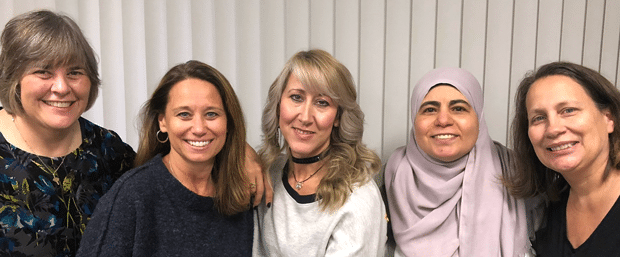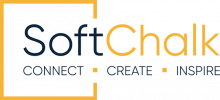 – Columbus State Community College
– Columbus State Community College
When a textbook approximates the cost of a community college class, it can negatively impact student success, if the student must decide between purchasing the textbook or paying tuition for an additional class. “Our Textbook Affordability and Accessibility Committee recently surveyed students and found that students report having to take fewer classes per semester, as they can’t afford to purchase all the required texts,” said Cathy Bill, a Distinguished Teaching Award recipient and assistant professor at Columbus State Community College (CSCC).
Students also reported they sometimes had to choose between using their limited resources for living expenses or course materials, Bill reported. “And of course, when course materials are not available to students, they are at a disadvantage for successful completion of the course.”
Across the country, educators are looking for alternatives to address the skyrocketing cost of textbooks. At CSCC, Bill and a team of colleagues were motivated to create their own, free, high-quality digital materials for two Anatomy and Physiology courses, as an alternative to students purchasing a traditional textbook.
In addition to addressing affordability of the textbook, another key factor for the CSCC group was control of the content. “We love the idea of having control over the content,” Bill said. She explained that previously the team had adopted one textbook for use in two courses to save students money. However, this necessitated a lot of jumping around in the textbook, which students found difficult. By developing their own learning materials, the CSCC team was able to provide a more streamlined and organized experience for their students.
Also, as the team developed their textbook, they chose a conversational tone, particularly for the more difficult concepts. “Those concepts are presented in a traditional manner, but also in a more informal format to make the content more approachable and understandable,” said Bill.
The CSCC digital textbook team included a group of six faculty members, an instructional designer and a medical illustrator. They wrote and recorded scripts for digital assets that were animated by the school’s Distance Education and Instructional Support department.
The team initially began by developing materials using MacBooks, IPads and iBooks author, and their initial 2-year effort resulted in the production of 6 iBooks, and 3GB of material containing 428 pages of text and interactive material.
Over time, the team discovered both advantages and disadvantages to their development methodology. The advantage of developing iBooks was that the content was highly interactive and streamlined and once downloaded, an internet connection was not needed to access the materials. On the downside, a little less than half their student population does not have an Apple device, and therefore, the material was not accessible to those students unless they came to campus and used campus computers. Additionally, the nature of the material was such that they could not track student results in their school’s learning management system.
To address these shortcomings, the team modified their development approach, and began to use SoftChalk Cloud, which enabled them to create interactive, online lessons to replace their textbook content. The team was able to reuse many of the interactive animations, images and other digital assets previously developed for the iBook project, by embedding them into their online lessons. The new SoftChalk lessons also included short lecture presentations and multiple assessments.
Other advantages to the SoftChalk lessons:
- Lessons are delivered directly via the school’s learning management system, and student grade results can be recorded in the LMS course grade center.
- Each lesson can be linked into multiple LMS courses so that modifications made centrally, are immediately and automatically updated in every class that uses that lesson. This makes managing the content quick and easy for faculty.
- Each of their five faculty are able to customize (change the order of the lessons, pick and choose the lessons to include) to accommodate their own teaching style.
- As they digitize learning materials for additional courses, they can easily reuse the assets they created for earlier courses.
The CSCC faculty primarily use their lessons in ‘blended’ sections of Human Physiology. Whereas previously students memorized notes but did not utilize other resources, Bill reports that now, ‘students are accessing all the interactive material and have commented that it is very helpful. And exam grades are good. It seems to be an effective way to deliver interactive course material.”
… this could potentially result in a cumulative savings of $180,000 per semester in textbook costs.
While faculty control of content, and improved student outcomes are huge benefits of the textbook development project, the initial desire to reduce student costs was also accomplished. The CSCC team estimates a cost savings of approximately $116-$181 per student per course. With approximately 550 students taking these courses each semester, the overall savings is significant. “Once we have a total of 5 courses, serving over 1,600 students per semester, this could potentially result in a cumulative savings of $180,000 per semester in textbook costs.” said Bill. The textbook digitization project appears to be a win-win for both students and faculty at CSCC.
The CSCC Team:

Cathy Bill, MS, DVM is an Assistant Professor of human anatomy and physiology and lead faculty of physiology courses at Columbus State Community College. She has been an educator for 27 years. In addition to serving as a co-author on two iBooks for Anatomy and Physiology, she is a co-author on a series of custom course manuals in Anatomy & Physiology. She is a 2005 recipient of Columbus State’s Distinguished Teaching Award.
Merideth Sellars, MS is an Associate Professor in the Department of Biological and Physical Sciences at Columbus State Community College where she serves as the PI for the Future Scientists of Ohio Scholars Program, Faculty Advisor for STEM Club and a coordinator for STEM Community Outreach and Engagement. In addition to serving as a co-author on two iBooks in Anatomy and Physiology, Merideth serves as the Distance Learning Lead Instructor for her department. She is a 2011 recipient of Columbus State’s Distinguished Teaching Award.
Julie Posey, MS is an Assistant Professor of human anatomy and physiology and lead faculty of general biology disciplines at Columbus State Community College. She has been an educator for 22 years and holds a Masters degree in pharmacology. In addition to serving as a co-author on two iBooks for Anatomy and Physiology, she is a co-author on a series of custom course manuals in A&P and Human Biology. She is a 2013 recipient of Columbus State’s Distinguished Teaching Award.
Ola Ali, MD, MS, MPH, PhD is an Annually Contracted Faculty member at Columbus State Community College, currently teaching Human Anatomy and Human Physiology courses. After graduating from the medical school, she earned a masters of gynecology, studied and obtained the United States Medical License Exams, completed a masters in Clinical and transitional sciences and finally a PhD in Epidemiology. She has been an educator for 7 years and was a 2017 nominee for Columbus State’s Distinguished Teaching Award.
Sharon Rohr Barnewall, MS, DVM is a Professor of human anatomy and physiology at Columbus State Community College. She has been an educator for 25 years. In addition to serving as a co-author on two iBooks for Anatomy and Physiology, she is a co-author on a series of custom course manuals in Anatomy & Physiology. She is a 2018 recipient of Columbus State’s Distinguished Full Professor Award.
